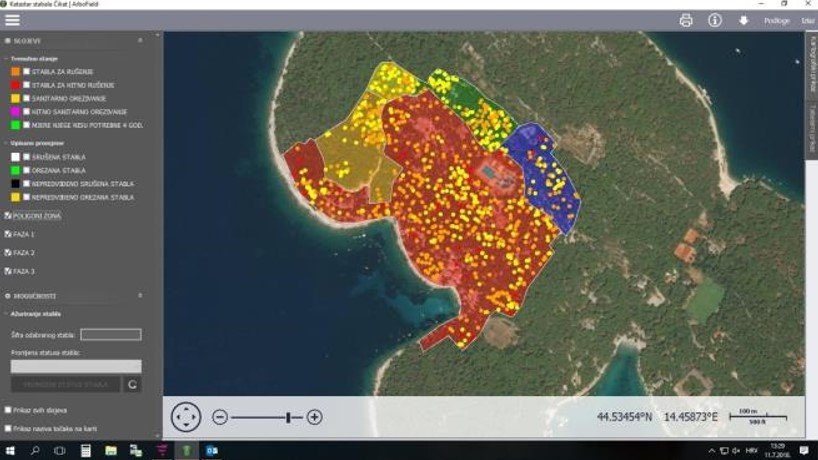Campsite Čikat is located on the island of Lošinj, in Croatia, and it is oriented towards families with small children and therefore features a lot of content for the young ones. The campsite itself is located within the Čikat Forest on an area of 35 ha. The Čikat Park Forest is a man-made eco-system created as the result of the human attempt to shape the landscape and cooperate with nature. It has a significant impact on the microclimate, and it moderates climate extremes and prevents the negative impact of wind and polluted air. With its treetops and soil, the Čikat Forest also regulates the water regime of the area, especially air humidity that is the result of transpiration thereby contributing to exceptional air purity. Also, a significant role of this protected natural object is its tourism, aesthetic, and recreational function.

Numerous analyses of the condition of the vegetation of the park forest executed by top experts in the fields of urban forestry, and by professors from the Department of Forest Engineering at the Faculty of Forestry, University of Zagreb, have established very different conditions of this forest. The dominating Aleppo pine is in the condition of ecological over-maturity (130 years old) and, as time passes, it loses its vital characteristics and is endangered by sudden deterioration and can dry out, and, as such, it can be a threat in terms of safety to walkers and campsite guests. The importance of managing the forest and rejuvenating its trees must be put in perspective of global warming and ever more present heatwaves as more and more campsite guests request accommodation facilities or pitches in shaded areas of the campsites. On the other hand, the campsite management is aware that shifting from a passive to an active tree management system is going to raise costs in the horticulture department, but the gains are much higher than the costs, especially looking in the long term. The challenge in not only to keep the trees themselves in check, but also to make guests more satisfied, to contribute to the richness of the local ecosystem and given that the Aleppo pine trees have shallow roots, their active management will prevent any potential issues in times of storms or strong winds.

The solution to the presented challenge was to prepare an assessment of the health condition and statics of trees in campsite Čikat that will encompass the following: tree mapping and numbering, identification of the main health conditions of trees, development of a proposal for planting and measures (long term measures for managing the forest area) and also, very importantly, raise awareness about the importance of sustainable nature management with the employees, guests, and other interested public. Campsite Čikat therefore started the project under the title “Safe Camping in the Area of Campsite Čikat“. By monitoring the condition of the forest using the VTA method, in the first phase of the project a total of 5,295 trees were analysed only in the area within the campsite, with 4,872 (92 %) of the trees being the Aleppo pine.
Throughout the project, each tree was numbered and diagnosed, and maintenance instructions were received (each tree has its diagnosis). Because of that, some trees were pruned or cut down due to their poor condition. To minimize the appearance of the reduced number of pines, the project called for planting of young pine trees. In the next phase a proposal of the zones for planting and growing was made as well as several trainings regarding the process of afforestation, safety, and environmental protection. A digital map available online was also crated. The map can be viewed on the link: https://www.arbofield.hr/Viewer/Home/Index/1. With the goal of including the campsite guests in the project, as well and giving them an opportunity to participate in the renewal of the park forest, the collecting of afforestation funds was organized. In addition, when planting new plant materials, common afforestation actions with guests were organized, in addition to the campsite employees.

This project will have a wide positive impact both from the guest and camping management point of view but also for nature itself. Not only will the campsite be a more pleasurable place which will shade guests from the scorching summer sun, but the management will be able to manage actively every single tree and remove any potential threats.

An actively managed forest in the campsite is a win-win solution that should be implemented by a much wider number of campsites in Europe. This will improve safety, lower costs in the long term but also raise the guest satisfaction.



Master of sustainable outdoor hospitality management is a result of Eu founded project CAMPMASTER:
Project title: Development of european curriculum in the field of sustainable camping resort management
Project ID: KA203-E-1423370
Project duration: from 01.10.2020. until 30.09.2022.
